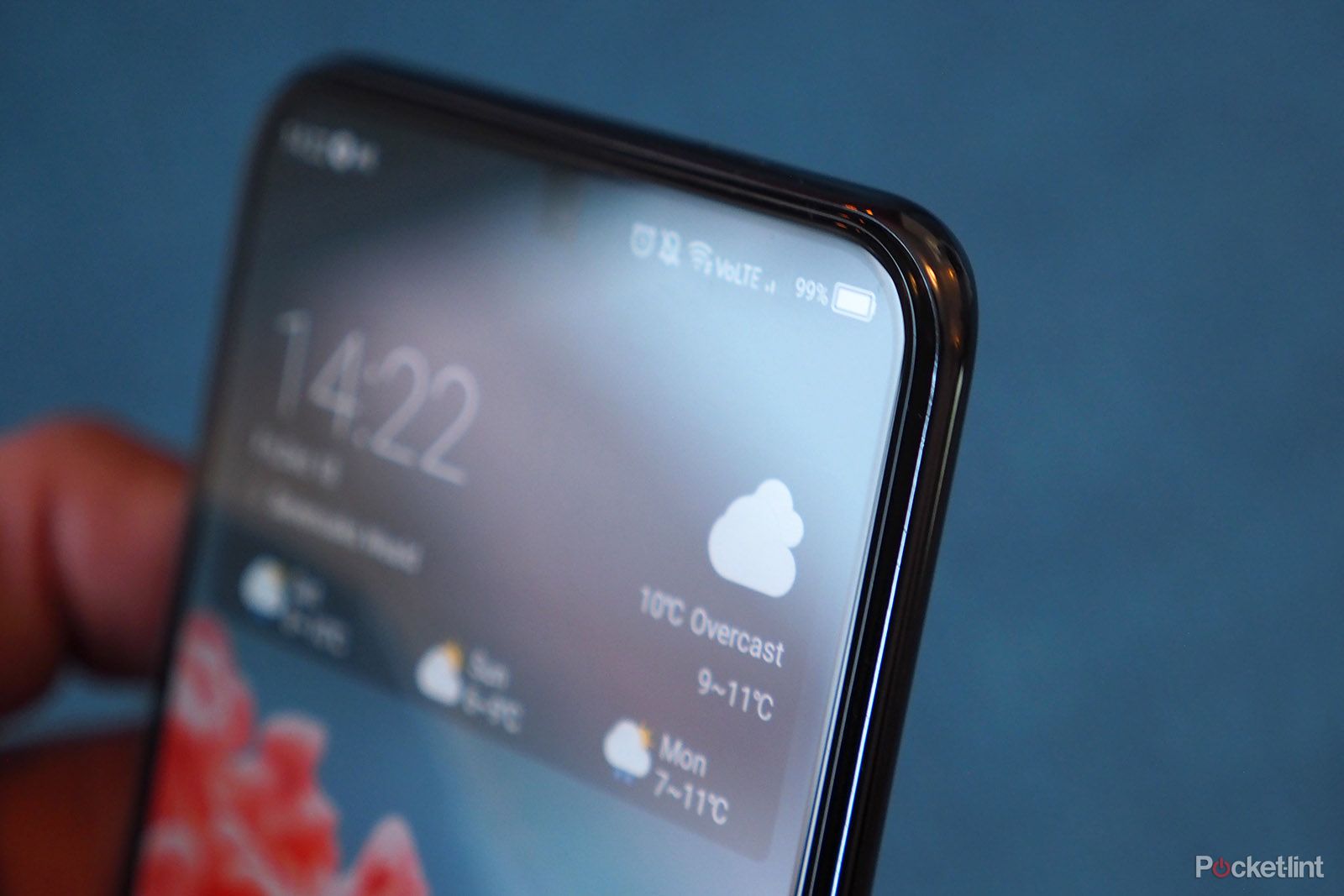For years, smartphone manufacturers have tried numerous ways to create a truly edge-to-edge display. The ultimate aim is to have a smartphone with a screen that reaches to all four edges of the frame, with no interruption.
The only issue has been the need for a selfie camera. That inevitably has be be put somewhere, and we've seen any number of inventive methods that aim to try to hide it, make it less of an obstruction, or at least, reduce its visual impact.
There have been pop-up camera mechanisms, tiny dewdrop notches, flip cameras, and punch-hole cameras put on the front of phones. But there is one new technology aimed at hiding it completely: the under-display camera. Also known as USC (under-screen camera) or UPC (under-panel camera).
What is an under display camera?
Thankfully, the clue is very clearly in the description. The UPC/USC or under display camera is a camera that's hidden behind the display panel of the smartphone.
How does an under display camera work?
In basic terms, it's similar to in-display optical fingerprint sensors. A small portion of the display panel is transparent, and lets light through to a camera that's sat behind the display. Or to be more technically accurate, a small portion near the top of the screen is actually a second, tiny transparent display.
If you're wondering why they can't do what they do with optical fingerprint sensors and just make a transparent portion of the main screen yet, it's because standard OLED panels aren't yet able to let enough light through to the other side to create a decent coloured image. So for now, companies like ZTE and Xiaomi have resorted to using a secondary, much smaller "invisible" display within a display.
And, if they used this display as the entire panel, that would have dire consequences for the fidelity of the image on the display. So they put it in a part of the screen where - most of the time - the quality of the image doesn't matter: in the status bar.
While the eventual aim is surely to have it implemented in a way that makes it completely invisible, early iterations haven't quite managed it. It's mostly invisible on darker days, but once you shine light on the area of the display hiding the camera, you can clearly see the area that's allowing light through. As technology develops, we expect this to improve.
Which phones have it?
The first phone to have the under-screen camera was the ZTE Axon 20 5G. So far it's also the only commercially available product with the under-display camera.
Vivo's Apex 2020 concept phone has it, but that's a concept phone and hasn't been made available to buy for consumers.
Both Xiaomi and Oppo have also demoed the technology, but again, are yet to release it in a final phone for retail. It's rumoured to make it to the Samsung Galaxy Z Fold 3 as well, but that's just speculation for now.
Why isn't it on more phones?
The simple answer for that - at time of first writing this piece - is the technology is imperfect. There's a reason it's only been implemented in a mid-range device from ZTE.
As mentioned already, part of the reason is that it's not possible (yet) to completely hide that secondary transparent screen. The other problem is to do with image quality from the camera that's behind it.
By adding a layer of material that's not completely clear in front of a camera, it makes it harder to get a really good photo. After all, cameras require light to take pictures, but crucially, also need that light to come through to the sensor without any disturbance to the signal in order produce sharp and accurate results.
This is an extreme over-simplification, but it's almost like covering the camera with a really thin layer of tracing paper and asking it to take as good a picture as if you hadn't. It just can't be done. Or hasn't been so far.
The aim undoubtedly is to make the transparent display portion more transparent, but also develop better AI/algorithms to correct the issues that arise from filtering light through the screen.

